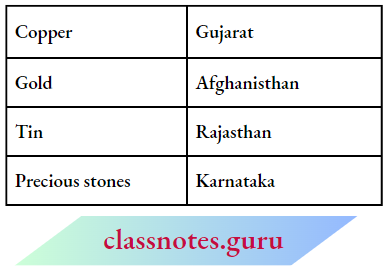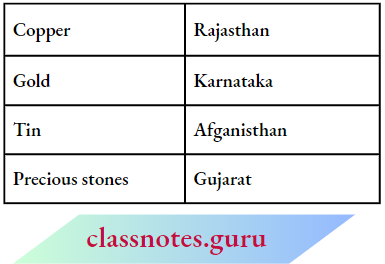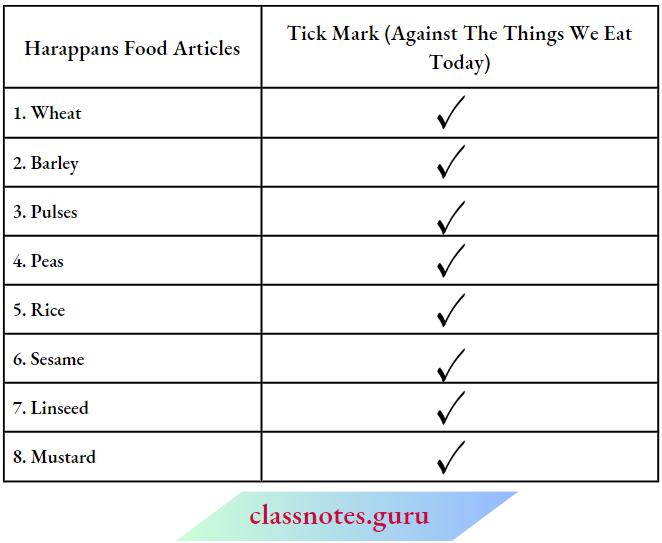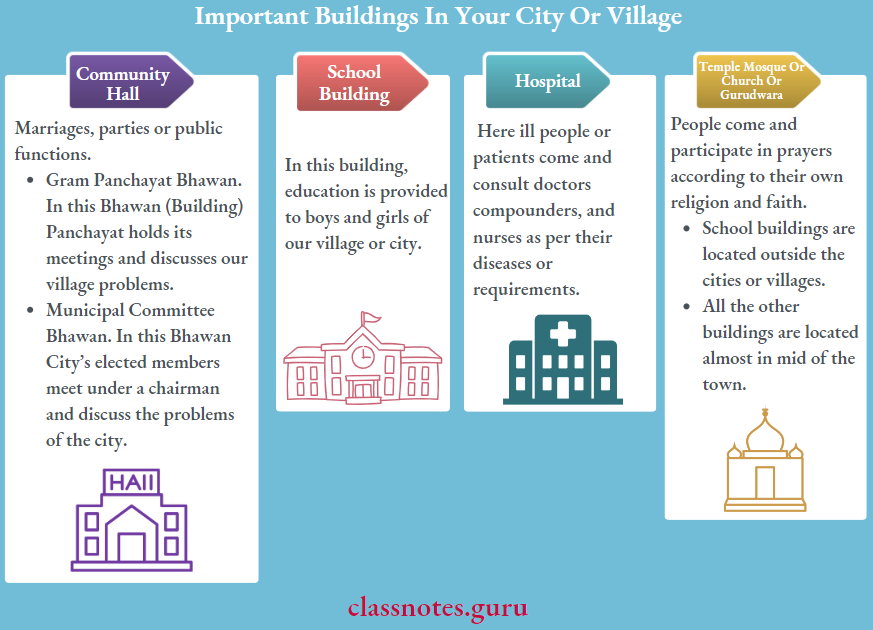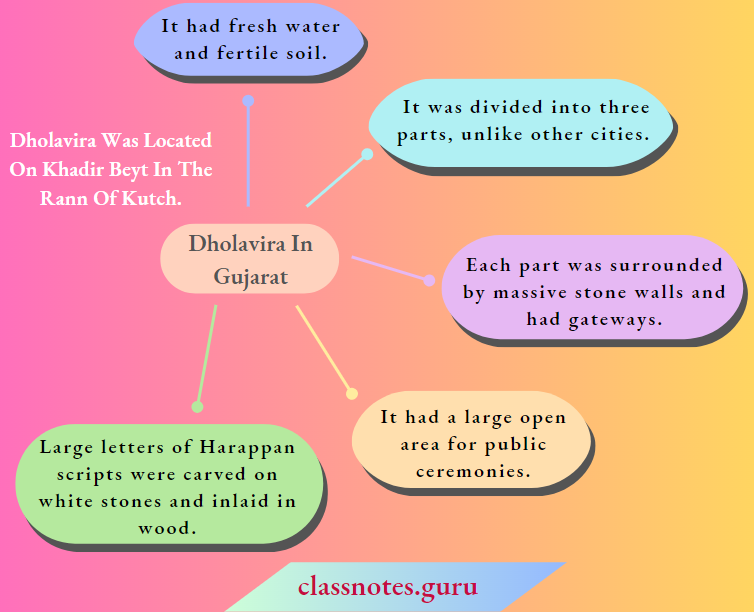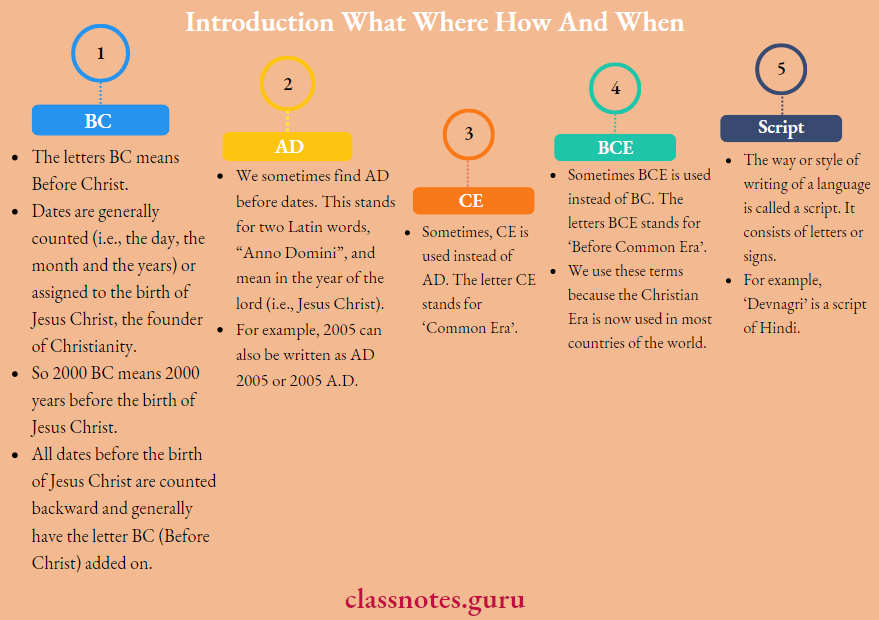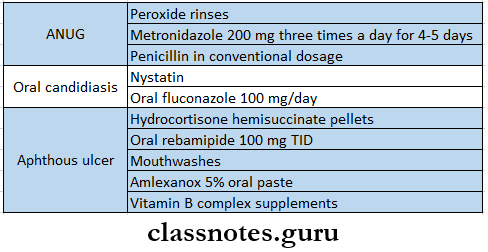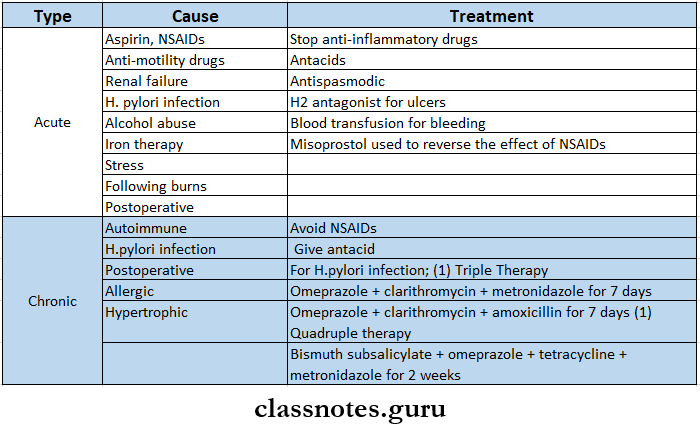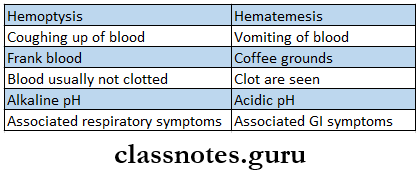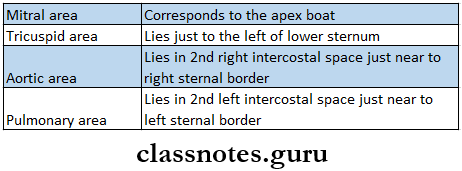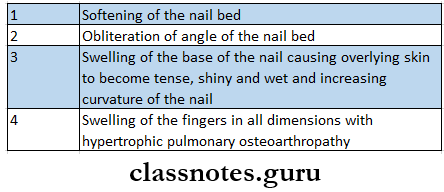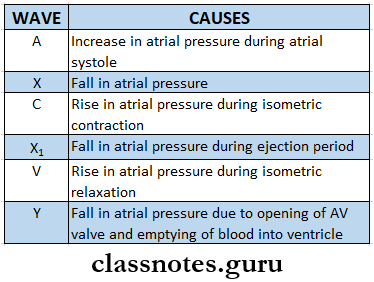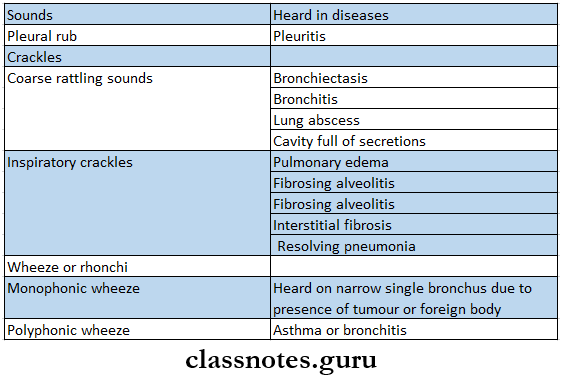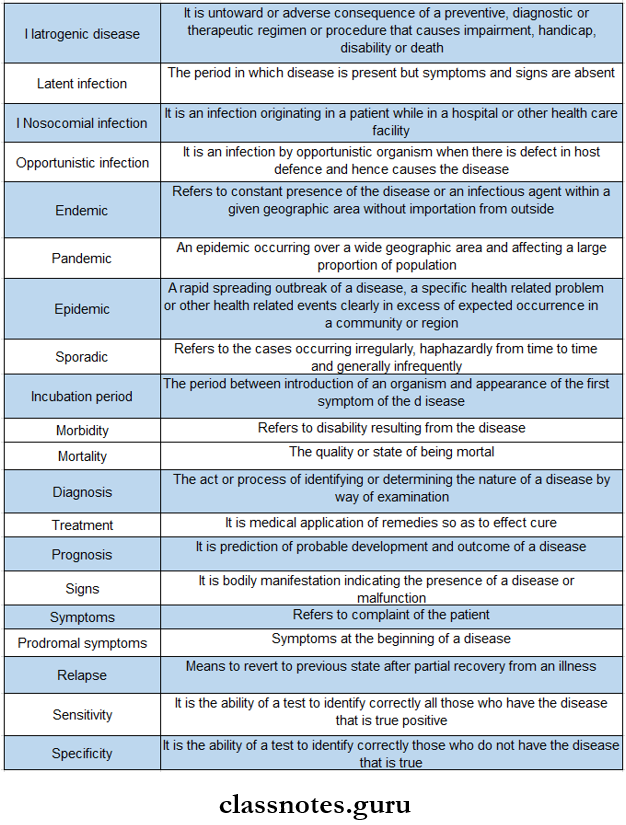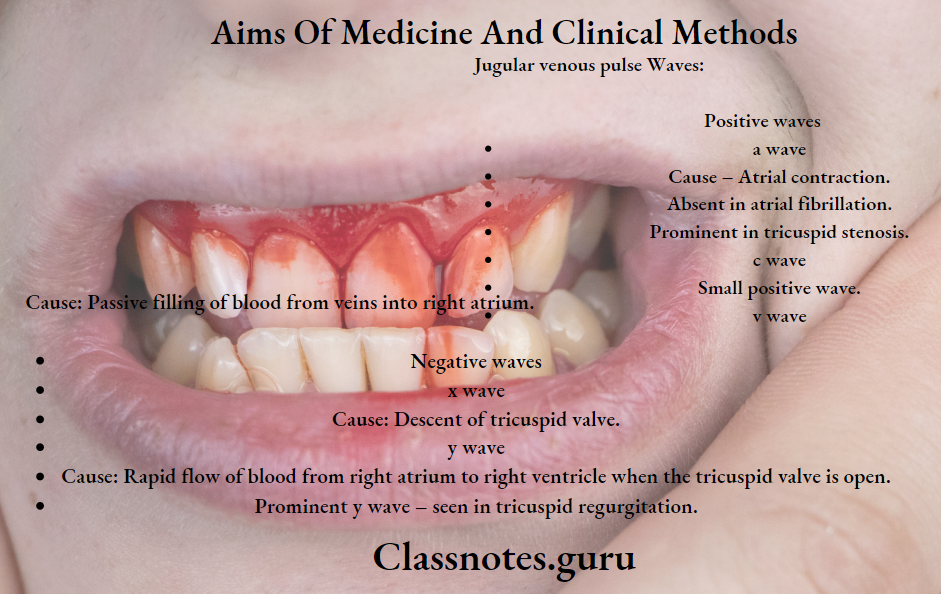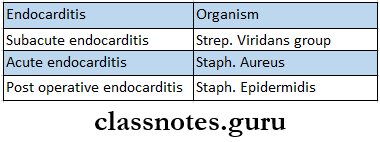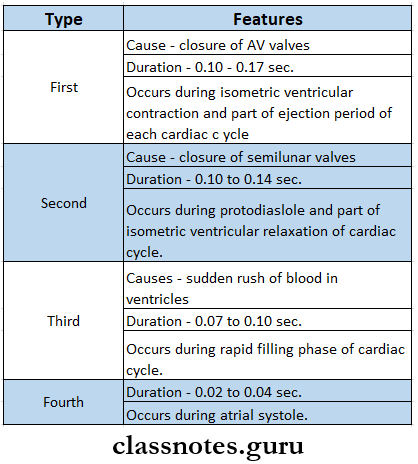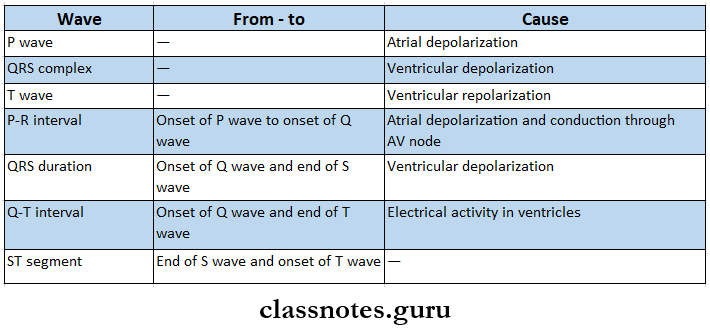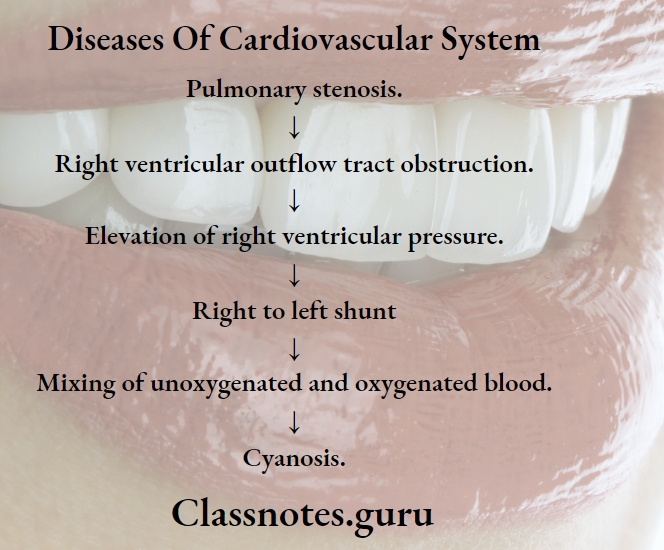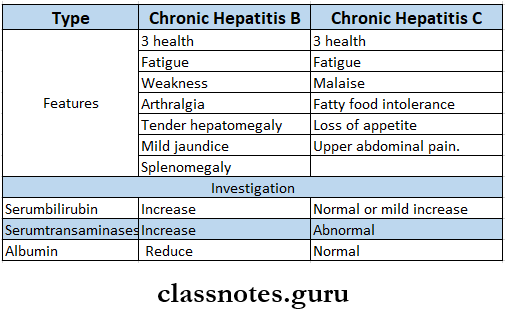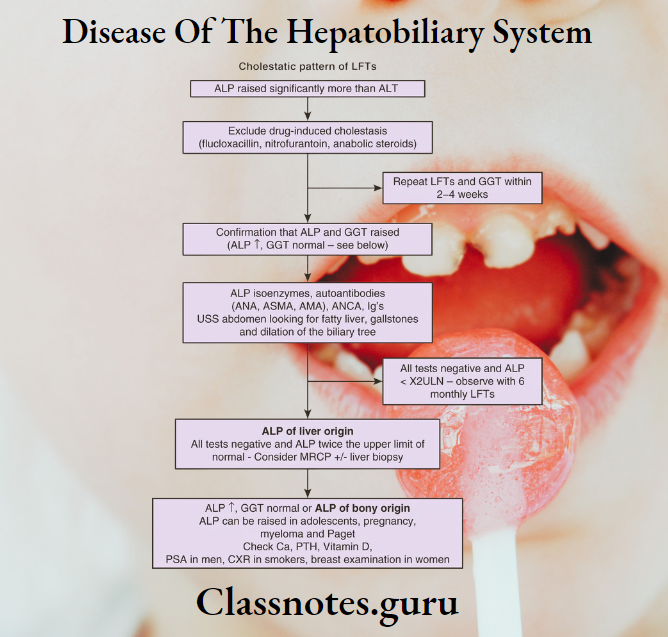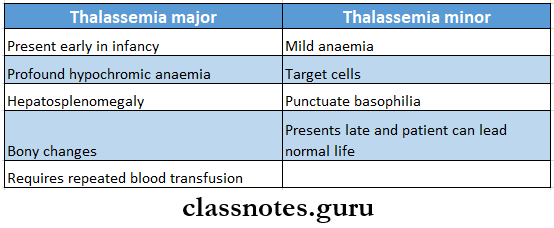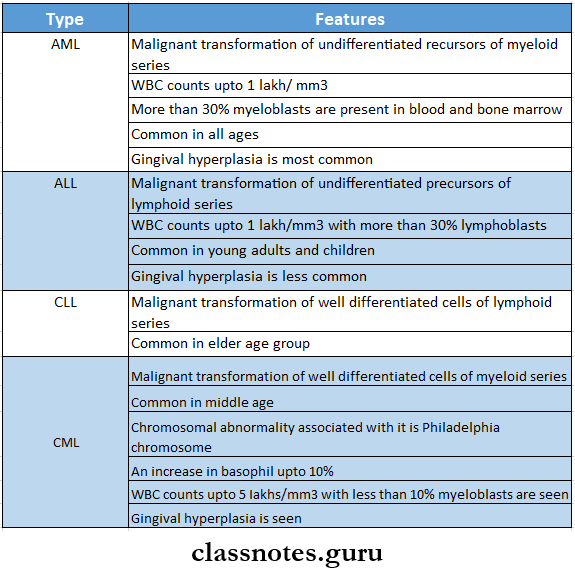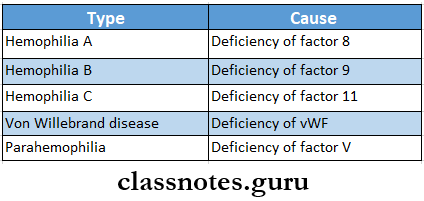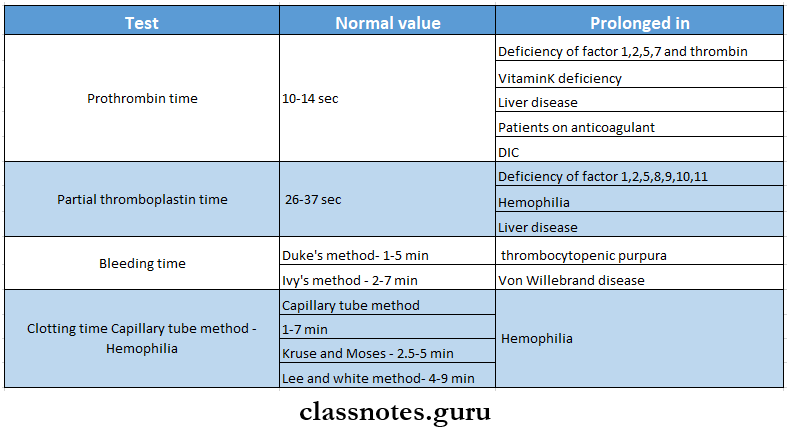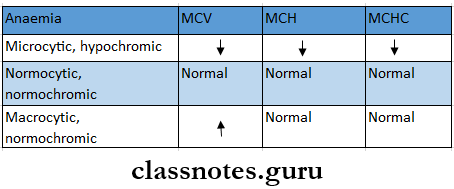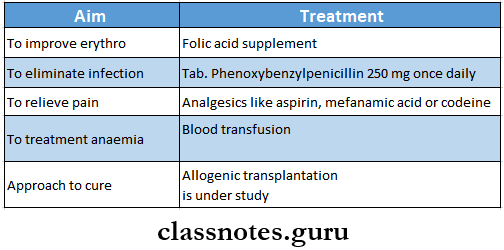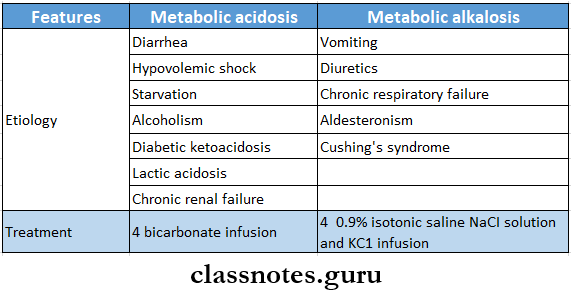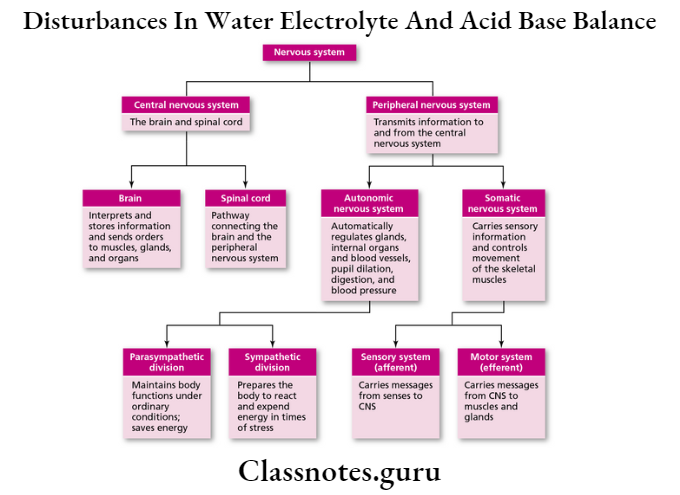NCERT Solutions For Class 6 History Chapter 5 Kingdoms Kings And An Early Republic Exercises
Question 1. State whether true or false:
1. Rajas who let the Ashvamedha horse pass through their lands were invited to the sacrifice.
Answer: True
2. The charioteer sprinkled sacred water on the king.
Answer: False
3. Archaeologists have found palaces in the settlements of the janapadas.
Answer: False
4. Pots to store grain were made out of Painted Grey Ware.
Answer: False
Class 6 History Chapter 5 NCERT Solutions
Read and Learn More NCERT Solutions For Class 6 Social Science
5. Many cities in Mahajanapadas were fortified.
Answer: True.
Question 2. Fill in the chart given below with the terms: hunter-gatherers, farmers, traders, craftspersons, and herders.
Answer:
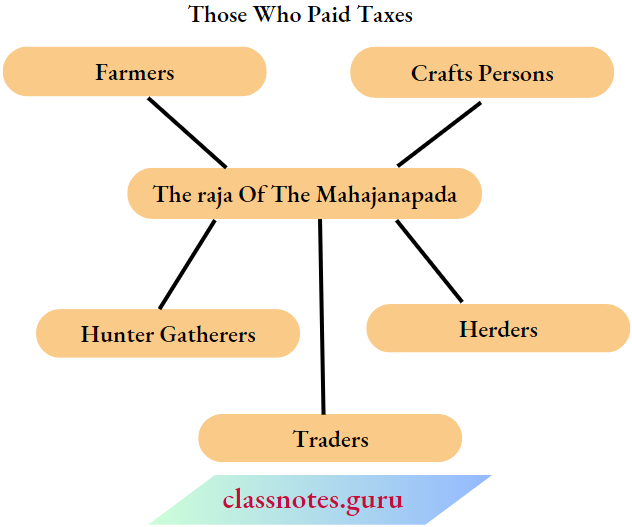
Question 3 Who were the groups who could not participate in the assemblies of the ganas?
Answer:
- Women,
- Dasas, and
- Karmakaras (or so-called shudras) were three groups who could not participate in the assemblies of the ganas or sangas.

Question 4. Why did the rajas of Mahajanapadas build forts?
Answer:
- The rajas of Mahajanapadas build forts to protect their capital city.
- Forts were probably built because people were afraid of attacks from other kings and needed protection.
- It is also likely that some rulers wanted to show how rich and powerful they were by building really large, tall and impressive walls around their cities. Also in this way, the land and the people living inside the fortified area could be controlled more easily by the king.
Question 5. Find out whether the groups mentioned in answer 3 have voting rights at present.
Answer:
Yes, all the groups (full citizens of a state or country of age 18 or above including men, women, etc.) have voting rights at present.
Kingdoms, Kings, and Early Republic Class 6 History NCERT
Question 6. Make a list of all those who would be present at the sacrifice. Which are the categories that are described in terms of their occupation?
Answer:
- The raja who wanted to perform the sacrifice.
- Specially trained priests.
- A Charioteer, who was a companion of the raja.
- Some relatives of the raja, particularly his wives and sons.
- Other small rajas, were simply spectators.
- The ordinary people, the Vish or Vaishya, who brought gifts for the king.
All are described as per their occupation.
Question 7. Is there a crop in this list that was not mentioned?
Answer:
All the crops like rice, wheat, barley, mustard etc. except sugarcane and cotton.
Question 8. List two ways in which the rajas of the mahajanapadas were different from those mentioned in the Rigveda.
Answer:
There were the following differences:
- The Rajas of Rigveda had no capitals or palaces. The rajas of mahajanapadas had capitals, palaces and sometimes fortified ones.
- Rigvedic rajas had no regular army, but the later rajas had regular armies who were paid salaries.
- Unlike mahajanapadas, Rigvedic rajas collected no taxes.
Question 9. What do you think would have been provided by hunters and gatherers?
Answer:
Hunters and gatherers would have given forest produce as taxes to the rulers.
Question 10. Can you think why kings would encourage changes in agriculture?
Answer:
Kings encouraged the changes in agriculture as it increased production If more production, people would be more prosperous. Raja can get more tax.
Question 11. In what ways were the armies of mahajanapadas different from those described in the Rigveda?
Answer:
Armies Differed In The Following Ways:
- There were no regular armies. Most men took part in the war. During mahajanapadas, there were regular armies who were paid salaries.
- Matters of war and peace were discussed in the assemblies. Raja decided on the matter in the later days.
Question 12. In what ways was the Vajji Sangha different from the other mahajanapadas? Try and list at least three differences.
Answer:
Three Differences:
- They held full and frequent public assemblies.
- They met and acted together.
- They followed established rules.
NCERT Solutions for Kingdoms, Kings, and an Early Republic Chapter 5
NCERT Solutions For Class 6 History Chapter 5 Kingdoms Kings And An Early Republic Very Short Answer Type Questions
Question 1 What is the most important power of the people in a democracy?
Answer:
The people can choose their own rulers in a democracy.
Question 2. What process has made it common for some men to become rulers during the last fifty years or so?
Answer:
Choosing leaders or rulers by voting is something that has become common during the last fifty years or so.
Question 3. What was the ‘Ashvamedha’ sacrifice?
Answer:
Ashvamedha or the ‘horse sacrifice’ was a ritual. A horse was let loose guarded by Raja’s men. If the raja of the other kingdom stopped it, he had to fight. If they allowed it to pass through their kingdom, it meant they accepted the strength of the other ruler.
Question 4. Who was excluded from the rituals?
Answer:
Shudras or the Dasas were excluded from the religious rituals.
Question 5. Name two janapadas’ of the north.
Answer:
Hastinapur near Meerut and Atranjikhera near Etah.
Question 6. Why did the rajas of ‘mahajanapadas’ collect taxes?
Answer:
Rulers were building forts and maintaining armies, for this they required funds and resources. Therefore they collected taxes.
Chapter 5 Kingdoms, Kings, and an Early Republic Class 6 Solutions
NCERT Solutions For Class 6 History Chapter 5 Kingdoms Kings And An Early Republic Short Answer Type Questions
Question 1. How did men become rulers in the past?
Answer:
- Some of the rajas (rulers) were probably chosen by the jana, the people.
- Around 3,000 years ago, we find some changes taking place in how rajas were chosen.
- Some men became rajas (rulers) by performing very big sacrifices.
Question 2. Explain the term later Vedic.
Answer:
- We have many books that were composed in north India, especially in the areas of the Ganga and the Yamuna, during the later Rigvedic age.
- As these books were composed after the Rigveda, are generally called later Vedic (or later Vedic literature). These include the Samaveda, Yajurveda and Atharvaveda, as well as other books.
- These were composed by priests and described how rituals were to be performed. They also contained rules about society.
Question 3. Write a short note on the composition of the society of the Later Vedic Period.
Answer:
- There were several different groups in society at this time—priests and warriors, farmers, herders, traders, craftspersons, labourers, fishing folk and forest people.
- Some priests and warriors were rich. Also, some farmers and traders were rich.
- Others including many herders, craftspersons, labourers, fishing folk hunters and gatherers were poor.
Question 4. Write a brief note on Painted grey ware.
Answer:
The Painted Grey Ware
- Plates and bowls are the most common vessels made out of Painted Grey Ware. These are extremely fine to touch, with a nice, smooth surface.
- Perhaps Painted Grey Wares were used on special occasions, for important people and to serve special types of food.
Question 5. Write the different roles performed by people present at the sacrifice.
Answer:
The raja was the main figure in the ritual.
- Raja Charioteer, his companion in battle field chanted tales of exploits.
- Raja wives and relatives performed minor rituals.
- Other rajas watched the sacrifice as spectators.
- Priests performed the rituals including sprinkling of sacred water.
- Vish or Vaishyas brought gifts.
Question 6. How were forests important for Magadha?
Answer:
Parts of Magadha were forested (present-day Jharkhand)
- Elephants living there could be captured and trained for the army.
- Wood for building houses, carts chariots etc.
- Iron ore mines could be tapped for tools and weapons.
Question 7. Write a short note on Alexander.
Answer:
Alexander of Macedonia wanted to become a world conqueror:
- Alexander conquered parts of Egypt and West Asia and came to India.
- On the banks of river Beas, his soldiers refused to go further.
- Alexander could not fulfil his dream.
Question 8. What was the governance system of the ganas or the sanghas?
Answer:
In gana or a sangha, there were many rulers. Sometimes thousands of rajas ruled together
- The rajas performed rituals together.
- They met in assemblies to make decisions through discussions and debates.
- They discussed issues related to war and peace in the assembly.
- Women and dasas were not allowed to participate.
NCERT Solutions For Class 6 History Chapter 5 Kingdoms Kings And An Early Republic Long Answer Type Questions
Question 1. Discuss the four Varnas of the later Vedic period.
Answer:
The Four Varnas. The priests divided people of the ancient India (of the Later Vedic Age) into four groups, called Varnas. According to them, each Varna had a different set of functions to perform.
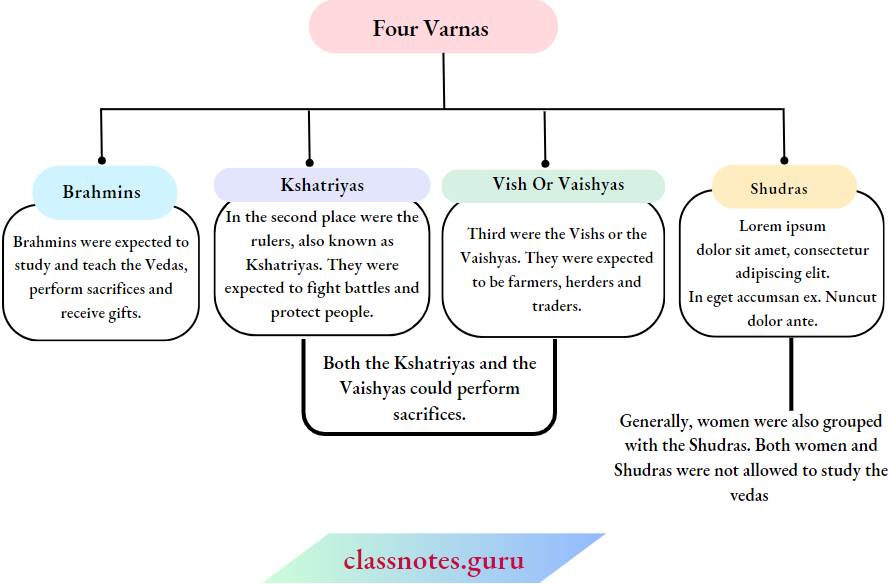
NCERT Class 6 History Kingdoms, Kings, and Early Republic Summary
Question 2. What was the basis of the Varna system,, according to the priests? Why did people oppose the system of Varnas?
Answer:
- Basis Of The Varnas
- The priests declared that four groups of people were decided on the basis of birth. For instance, if one’s father and mother were Brahmins one would automatically become a Brahmin and so on.
- Later on, the priests classified some people as untouchable. These included some crafts persons, hunters and gatherers, as well as people who helped perform burials and cremations.
- The priests said that contact with these groups was polluting,
- Causes Of Opposition To The System Of Varnas. Many people did not accept the system of Varna laid down by the Brahmins
- Some kings thought they were superior to the priests.
- Other people felt that birth could not be a basis for deciding which area people belonged to.
- Besides, some people felt that there should be no differences among people based on occupation.
- Other people favoured that everybody should be able to perform rituals.
- Some people condemned the practice of untouchability.
Question 3. Who ruled janapada? Where people were living and what was their occupation?
Answer:
Rajas who performed the big sacrifices became the rulers of janapadas:
- People here lived in huts and reared cattle and other animals.
- They grew a variety of crops like rice, wheat, barley, mustard etc.
- They made grey and red earthen pots.
- Some people were herders, traders and farmers.
- Some people were hunters, craft persons and gatherers.
- Some janapadas became important and were later called mahajanapadas.
Question 4. What type of taxes were collected by the rulers?
Answer:
Rulers collected the following taxes for fortification and maintaining armies:
- Taxes on crops which was 176th of the produce.
- This was known as Bhaga
- Taxes on craft persons in the form of labour performed for the king.
- Herders paid taxes in the form of animals and their produce.
- There was a trade tax on goods bought and sold.
- Hunters and gatherers provided forest produce to the rajas,
Question 5. What changes were brought to agriculture during this period?
Answer:
There were two major changes in agriculture
- Iron ploughshare were used to turn over the soil.
- Transplanting of paddy began. Instead of scattering seeds, saplings were grown and then planted.
- This led to increased production. The work of Dasas increased.
NCERT Solutions For Class 6 History Chapter 5 Kingdoms Kings And An Early Republic Map Skills
On the outline map of India locate the janapadas and mahajanapadas.
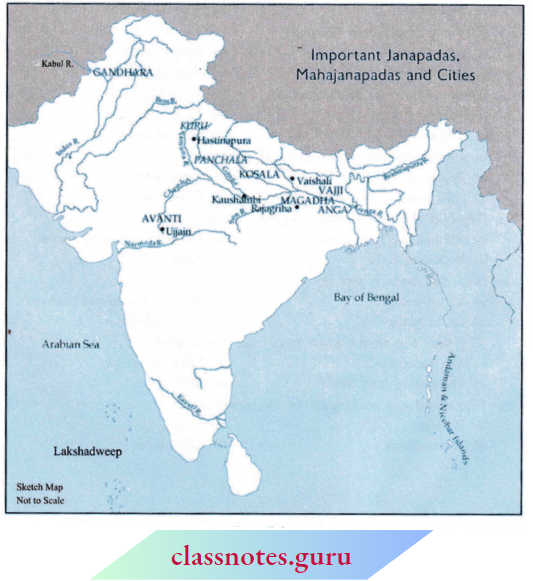
- Kuru
- Panchala
- Kosala
- Gandhara
- Magadha
- Anga
- Avanti
History Chapter 5 NCERT Solutions: Kingdoms, Kings, and an Early Republic
NCERT Solutions For Class 6 History Chapter 5 Kingdoms Kings And An Early Republic Multiple Choice Questions
Choose The Correct Answer:
Question 1. How did men become rulers around 3,000 years ago?
- By voting
- By Ashvamedha
- None of these
- Both (1) and (2)
Answer: 2. By Ashvamedha
Question 2. Who guarded the horse?
- Janas
- Raja’s men
- Ordinary people
- All of these
Answer: 2. Raja’s men
Question 3. Who brought gifts for rulers?
- Vaishyas
- Shudras
- Brahmins
- None of these
Answer: 1. Vaishyas
Question 4. Where is Hastinapur located?
- Near Kolkata
- Near Mumbai
- Near Meerut
- Near Agra
Answer: 3. Near Meerut
Kingdoms, Kings, and an Early Republic Class 6 History Notes
Question 5. Where is Purana Qila situated?
- Delhi
- Agra
- Kolkata
- None of these
Answer: 1. Delhi
Question 6. In what mode were the payments done?
- Punch marked coins
- Paper notes
- Gold coins
- Silver coins
Answer: 1. Punch marked coins
Question 7. Why did the rulers collect regular taxes?
- For building huge forts
- For maintaining big armies
- Both (1) and (2)
- None of these
Answer: 3. Both (1) and (2)
Question 8. How did herders pay taxes?
- Forest products
- Animals and animal products
- By labouring
- None of these
Answer: 2. Animals and animal products
Question 9. Why was the river Ganga important for people?
- For transport
- For water supply
- To make the land fertile
- All of these
Answer: 4. All of these
Question 10. Who could not participate in the assemblies?
- Women
- Dasas
- Kammakaras
- All of these
Answer: 4. All of these
Class 6 History NCERT Solutions Chapter 5: Kings, Kingdoms, and Early Republic
NCERT Solutions For Class 6 History Chapter 5 Kingdoms Kings And An Early Republic Objective Type Questions
Question 1. Fill in the blanks with appropriate words:
1. _______ turned into mahajanapadas about 2500 years ago.
Answer: Janapadas
2. The present name of Rajgriha is _______
Answer: Rajgir
3. Alexander’s troops stopped at the banks of river _________
Answer: Beas
4. The taxes on crops were called _________
Answer: Bhaga
5. Last of the ganas were conquered by the _________
Answer: Guptas
Question 2. State whether the given statement is true or false:
1. Ashvamedha was a sacrifice of a cow.
Answer: False
2. Farmers paid 1/6th of produce as tax.
Answer: True
3. Painted grey ware is a type of house.
Answer: False
Class 6 History NCERT Solutions Chapter 5: Kings, Kingdoms, and Early Republic
4. If the rajas allowed the horse to pass it meant they accepted the raja, owner of the house, as stronger.
Answer: True
5. Parts of Egypt and West Asia were conquered by Alexander.
Answer: True
6. Present-day Patna was earlier known as Pataliputra.
Answer: True
Question 3. Match the contents of Column A with that of Column B.
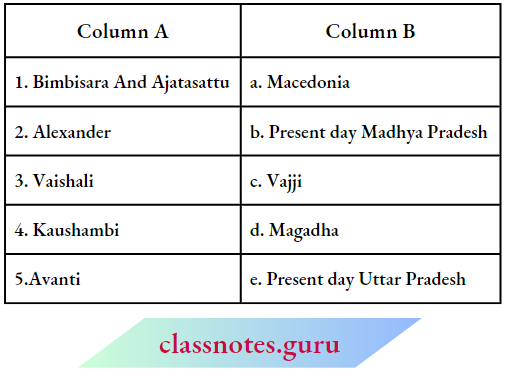
Answer: 1-d, 2-a, 3-c, 4-e, 5-b

